Related Research Articles
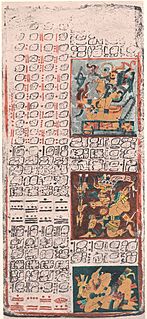
Indigenous languages of the Americas are spoken by indigenous peoples from Alaska, Nunavut, and Greenland to the southern tip of South America, encompassing the land masses that constitute the Americas. These indigenous languages consist of dozens of distinct language families, as well as many language isolates and unclassified languages.
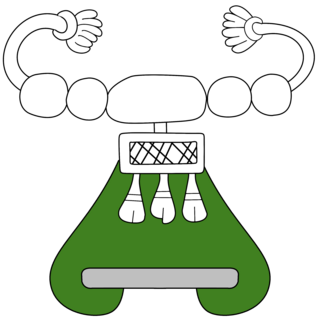
The Nahuas of El Salvador (Cuscatlan), better known as "Pipiles" in the academic literature, are an indigenous people who live in western El Salvador, which they call Cuscatlan. The Pipil language, or Nawat, belongs to the Nahuatl dialect group, which stretches from Durango in Mexico to El Salvador, and historically as far as the Nicoya Peninsula of Costa Rica. It is thought that the Pipil, along with the neighbouring Nicarao people, migrated from Central Mexico to their present location around 900 AD, after the Chichimeca-Toltec civil war. As they settled in the area, they founded the city-state of Cuscatlan, absorbed many other preexisting polities, and intermarried with the native peoples, mostly Lenca, Poqomam, and Xinca.
Historically Nahuatl has been written with greatly differing orthographies because no institution has governed its spelling. This is still true for the classical dialect which is a dead language documented in many historical sources and literature, but spelling of the modern dialects of Nahuatl is governed by the Mexican Secretaría de Educación Publica, although they do have some difficulties in implementing their orthographic standards in the Nahuatl communities.

Mesoamerican languages are the languages indigenous to the Mesoamerican cultural area, which covers southern Mexico, all of Guatemala and Belize and parts of Honduras and El Salvador and Nicaragua. The area is characterized by extensive linguistic diversity containing several hundred different languages and seven major language families. Mesoamerica is also an area of high linguistic diffusion in that long-term interaction among speakers of different languages through several millennia has resulted in the convergence of certain linguistic traits across disparate language families. The Mesoamerican sprachbund is commonly referred to as the Mesoamerican Linguistic Area.

Uto-Aztecan, Uto-Aztekan or (rarely) Uto-Nahuatl is a family of indigenous languages of the Americas, consisting of over 30 languages. Uto-Aztecan languages are found almost entirely in the Western United States and Mexico. The name of the language family was created to show that it includes both the Ute language of Utah and the Nahuan languages of Mexico.
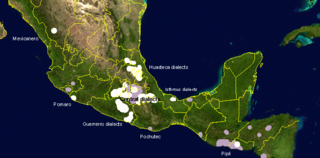
The Nahuan or Aztecan languages are those languages of the Uto-Aztecan language family that have undergone a sound change, known as Whorf's law, that changed an original *t to before *a. Subsequently, some Nahuan languages have changed this to or back to, but it can still be seen that the language went through a stage. The best known Nahuan language is Nahuatl.
Una Canger is a Danish linguist specializing in languages of Mesoamerica. She has published mostly about the Nahuatl language with a particular focus on the dialectology of Modern Nahuatl, and is considered among the world's leading specialists in this area. She held tenure at the University of Copenhagen, leading the department for Native American Languages and Cultures until she reached the age of 70 in 2008 and was forced into retirement. In 2012 she was awarded the Order of the Aztec Eagle for her contributions to the study of Mexican culture. In 2005 she received the teaching prize of Copenhagen University, the Harald.

Nawat is a Uto-Toltec or Uto-Nahuan language native to Central America. It is the southernmost extant member of the Uto-Aztecan family. It was spoken in several parts of present-day Central America before the Spanish conquest, but now is mostly confined to western El Salvador. It has been on the verge of extinction in El Salvador and has already gone extinct elsewhere in Central America, but as of 2012 new second-language speakers are starting to appear.
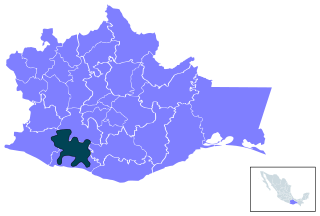
Chatino is a group of indigenous Mesoamerican languages. These languages are a branch of the Zapotecan family within the Oto-Manguean language family. They are natively spoken by 45,000 Chatino people, whose communities are located in the southern portion of the Mexican state of Oaxaca.

The Tarahumara language is a Mexican indigenous language of the Uto-Aztecan language family spoken by around 70,000 Tarahumara (Rarámuri/Ralámuli) people in the state of Chihuahua, according to an estimate by the government of Mexico.
Tetelcingo Nahuatl, called Mösiehuali̱ by its speakers, is a Nahuatl variety of central Mexico. It is one of the core varieties closely related to Classical Nahuatl. It is spoken in the town of Tetelcingo, Morelos, and the adjacent Colonia Cuauhtémoc and Colonia Lázaro Cárdenas. These three population centers lie to the north of Cuautla, Morelos and have been largely absorbed into its urban area; as a result the Tetelcingo language and culture are under intense pressure.
Huasteca Nahuatl is a Nahuan language spoken by over a million people in the region of La Huasteca in Mexico, centered in the states of Hidalgo (Eastern) and San Luis Potosí (Western).
Proto-Nahuan is a hypothetical daughter language of the Proto-Uto-Aztecan language. It is the common ancestor from which the modern Nahuan languages have developed.

Aztec–Tanoan is a hypothetical and undemonstrated language family that proposes a genealogical relation between the Tanoan and the Uto-Aztecan families. In some forms, Aztec–Tanoan has also included the Zuni isolate. This proposed classification has not been definitively demonstrated, largely because of slow progress in the reconstruction of the intermediate stages of the two language families involved, but is still considered promising by many linguists. The grouping was originally proposed by Edward Sapir in his 1921 classification, but it was not until 1937 that supporting evidence was published by Benjamin Lee Whorf and G. L. Trager. Their proposal included some 67 proposed cognates, but subsequent reviews have found most of them to be unconvincing. A small number of their proposed cognates do seem to have some merit and in his 1997 review of the hypothesis Lyle Campbell states that the proposal is not implausible but requires detailed study. A recent article by Jane H. Hill argues that the evidence cited for the genetic relation by Whorf and Trager is better understood as a result of language contact between the Uto-Aztecan and Tanoan proto-languages.
The Pueblo linguistic area is a Sprachbund consisting of the languages spoken in and near North American Pueblo locations. There are also many shared cultural practices in this area. For example, these cultures share many ceremonial vocabulary terms meant for prayer or song.
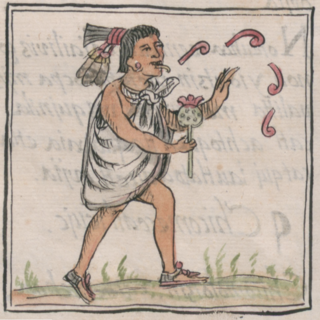
Nahuatl is a language or group of languages of the Uto-Aztecan language family. Varieties of Nahuatl are spoken by about 1.7 million Nahua peoples, most of whom live in Central Mexico.
Proto-Uto-Aztecan is the hypothetical common ancestor of the Uto-Aztecan languages. Authorities on the history of the language group have usually placed the Proto-Uto-Aztecan homeland in the border region between the United States and Mexico, namely the upland regions of Arizona and New Mexico and the adjacent areas of the Mexican states of Sonora and Chihuahua, roughly corresponding to the Sonoran Desert and the western part of the Chihuahuan Desert. It would have been spoken by Mesolithic foragers in Aridoamerica, about 5,000 years ago.
The Guerrero Nahuatl language is a Nahuan language spoken by 150,000 people in Mexico.
Whorf's law is a sound law in Uto-Aztecan linguistics proposed by the linguist Benjamin Lee Whorf. It explains the origin in the Nahuan languages of the phoneme which is not found in any of the other languages of the Uto-Aztecan family. The existence of in Nahuatl had puzzled previous linguists and caused Edward Sapir to reconstruct a phoneme for Proto-Uto-Aztecan based only on evidence from Aztecan. In a 1937 paper published in the journal American Anthropologist, Whorf argued that phoneme was a result of some of the Nahuan or Aztecan languages having undergone a sound change changing the original */t/ to in the position before */a/. The sound law has come to be known as "Whorf's law" and is still considered valid, although a more detailed understanding of the precise conditions under which it took place has been developed.
References
- ↑ Hammarström, Harald; Forkel, Robert; Haspelmath, Martin, eds. (2017). "Pochutec". Glottolog 3.0 . Jena, Germany: Max Planck Institute for the Science of Human History.
- ↑ Boas 1917
- ↑ Knab 1980
- ↑ Campbell and Langacker 1978
- ↑ Canger 2000:385
- ↑ Canger 1988:42-44
- ↑ Lastra 1992:37
- ↑ Peralta Ramírez 2005:4
- ↑ INALI (National Institute of Indigenous Languages, Mexico), 2008:63
- ↑ Canger 1980: 117.
- ↑ 1985